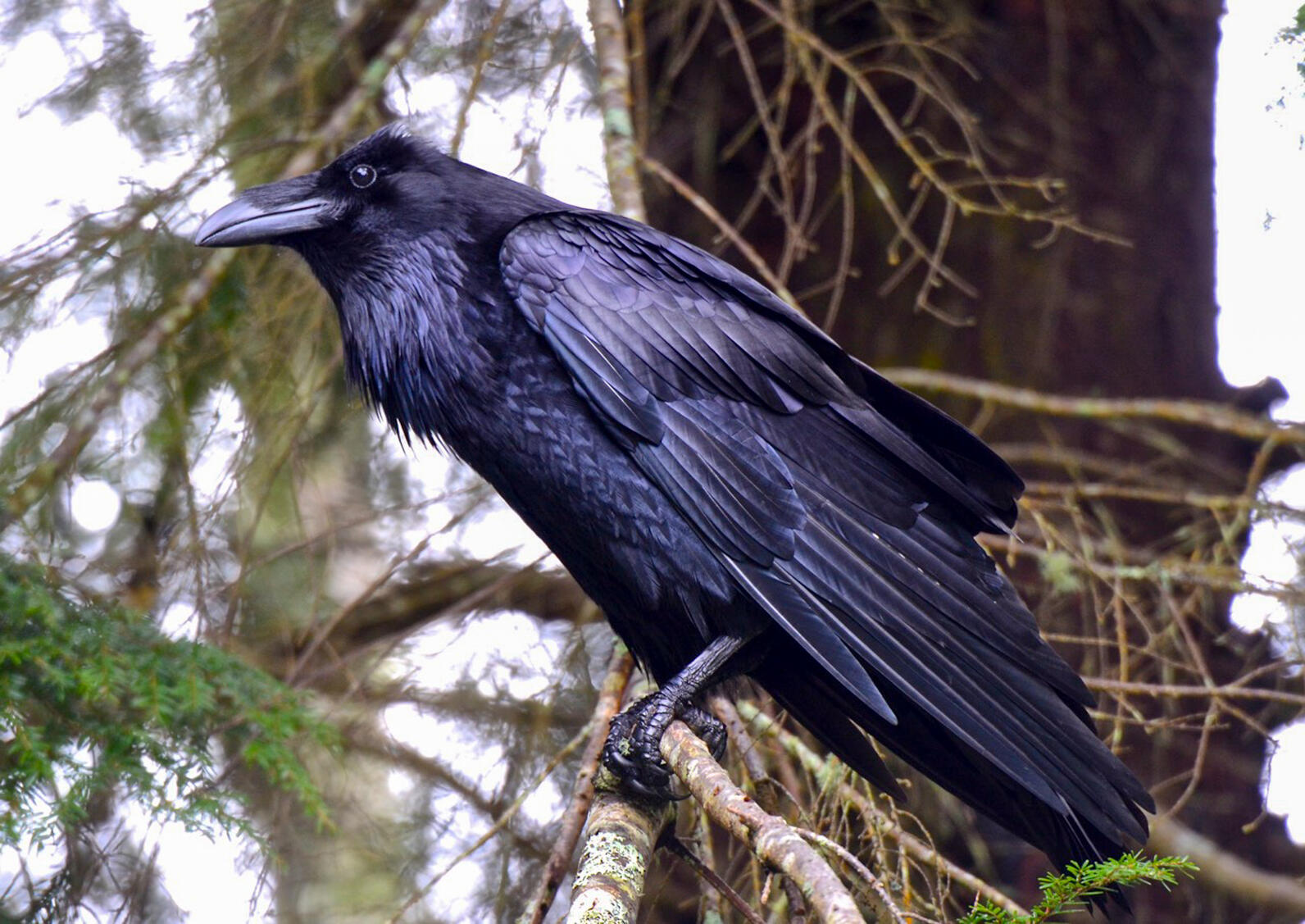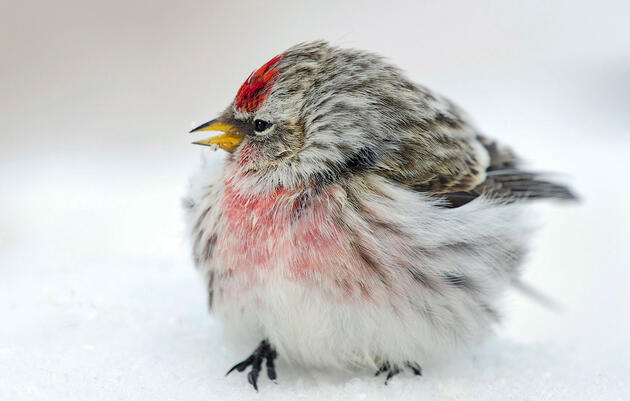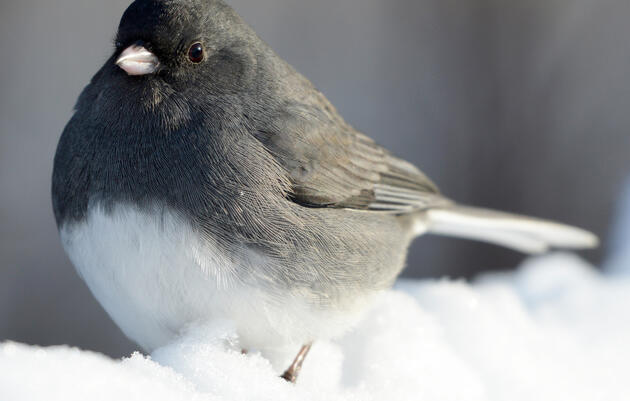There is so much to be said about the Common Raven. Perhaps most famous for Edgar Allen Poe's poem, "The Raven," in which Poe describes a strange encounter with a raven at his chamber, the common raven is much more than its creepy reputation!
Nerd alert! Ravens are part of the Corvidae family along with American Crows, jays, magpies and nutcrackers. The Corvidae family is the most intelligent family of birds other than parrots. As such, ravens have some similar intellectual capabilities to humans. Studies have found that ravens are capable of distinguishing fair from unfair, remembering faces, holding grudges, connecting cause and effect, and mourning their dead. Maybe the most impressive, when raised in captivity, they can even imitate human words; one Common Raven raised from birth was taught to mimic the word “nevermore” (All About Birds). Their wit comes in handy when hunting, too. Ravens often tag-team prey, for example, one might distract a breeding pair enough to draw them from their nest while the other raven swoops in and steals the eggs.
Playful. The Birds of North America online writes that ravens have been seen “sliding down inclines on their belly, lying on their side grappling sticks, dropping and catching objects while in flight, hanging upside down by one or two feet, snow “bathing,” giving vocal monologues, caching inedible items, playing “tug-of-war” or “king-of-the-hill” with other ravens, and pecking predators on the tail.” The Cornell Lab of Ornithology calls the raven an acrobatic flier, often doing rolls and somersaults in the air. One bird was seen flying upside down for more than a half-mile (All About Birds).
Comeback kid. As eastern forests were cut down in the nineteenth and twentieth centuries ravens disappeared from most of eastern North America, but they are beginning to return to the Northeast as forest cover regenerates. Now it is common to see the raven year-long in Vermont.
Identification

ID Info: The largest perching bird, about the size of a hawk. A sleek, black bird with a long tail and a thick, shaggy throat. Beak is thick, long and covered in feathers at the base. Flies on long wings with graceful wingbeats. In flight, the tail looks wedge-shaped.
Call: Common Ravens have a distinct guttural call (sounds like a mix between gurgling and croaking) as well as several other calls for different kinds of communication (see video below). Moreover, ravens can mimic the calls of other bird species. Often lurches forward and puff out its throat feathers when calling
Common Raven Calls. Watch the whole video or skip around to hear the different calls!
Diet: Scavenger and predator, omnivore. Common Ravens will eat almost anything they can get hold of. They eat carrion; small animals from the size of mice and baby tortoises up to adult Rock Pigeons and nestling Great Blue Herons; eggs; grasshoppers, beetles, scorpions, and other arthropods; fish; wolf and sled-dog dung; grains, buds, and berries; pet food; and many types of human food including unattended picnic items and garbage (All About Birds).
Habitat: Nearly anywhere on the Northern Hemisphere.
Where to look: Roadsides, waddling/hopping through agricultural fields, in the forest, in urban areas...really anywhere!
It's almost breeding season for Common Ravens in Vermont! Soon they will begin defending their territory and reinforcing nests. Ravens tend to return to the same nest each year and add sticks or other new reinforcements each breeding season. Mary Holland of Naturally Curious writes: "Often ravens will use the same nest for many years, renovating and repairing it every year. They typically nest on or in cliffs and trees (although abandoned cars, a satellite dish and a barbecue grill have been used), with the female doing the lion’s share of the construction. (The male assists her by bringing sticks to the nest site.) The base of the nest consists of sticks up to three feet long with smaller branches being woven into a cup lined with softer material such as sheep’s wool, fur and shredded bark. The finished nest is two to three feet across and up to four feet deep."
There is still so much to learn! If you'd like to explore more on your own here are some of my favorite resources:
- Difference between a raven and a crow - Article from Audubon Magazine
- Compare the raven and crow side by side with Cornell's All About Birds - Compare photos side by side and listen to calls/songs.
- Listen to the sweet, soft warble common ravens sing to their partners - An episode of the short podcast, Bird Note.
- How ravens keep their black feathers cool - Article from Audubon Magazine











